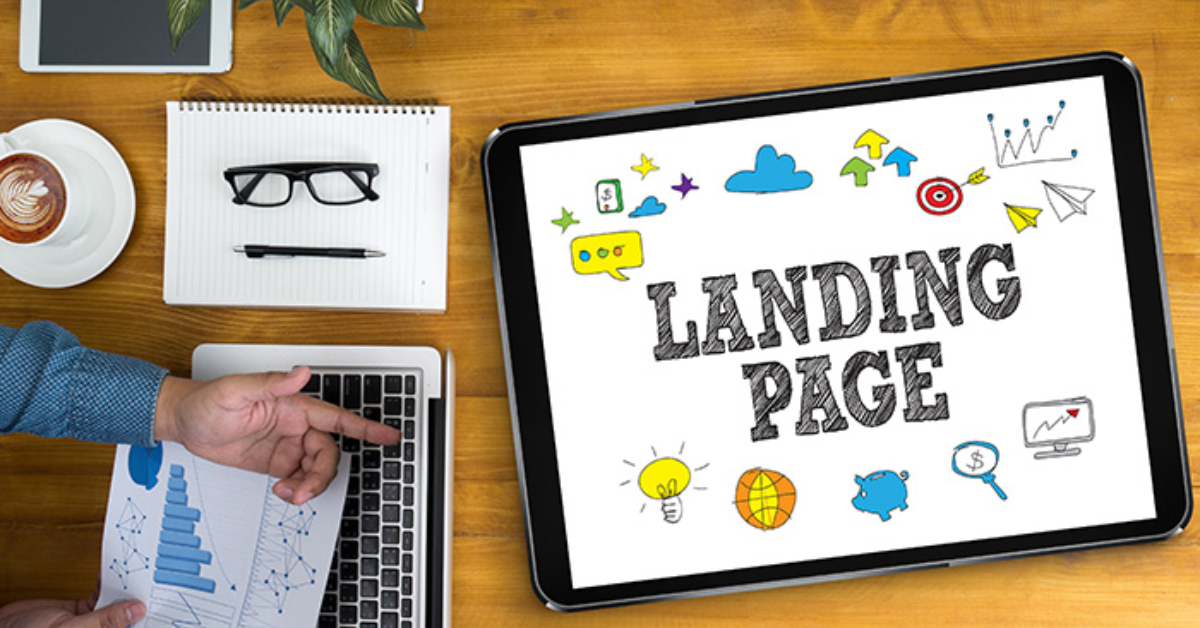A website with only one page can be a great marketing tool that helps promote one service or the entire business. This type of website is called ‘a landing page’. However, ‘less’ doesn’t always translate to ‘easier’. Creating a landing page sometimes requires even more planning than an ordinary website, because you only have so much on a single page. You have to learn to use the landing page’s limitations to your advantage, and this article is going to help you with it. It’s time to master the tools provided by website builders to create the best landing page for your business!
What is a Landing Page?
A landing page is, at the same time, simpler and more complicated than a regular website. Unlike a traditional website, a landing page doesn’t have multiple sections and menus — it only has one single page. The main purpose of a landing page is to quickly introduce a potential client to an event, a business, a product or a service. It is an effective and concentrated form of advertising that is often used in marketing to generate leads and conversions.
A landing page is easier to make than a website since you don’t have to bother with creating and designing multiple pages. However, you should somehow manage to include all the relevant information in a single page without making it overwhelming. A good landing page has a clear message and call-to-action.
For example, it can promote an online course or a sale. It should present bullet points that will hook clients’ attention and make them click on a button to buy something or to learn more about a product. That’s why it’s so important to be concise, but convincing.
The secret of creating an effective landing page is to know exactly what you are selling and to whom.
Step 1: Define Your Goal
As was said before, only with a clear goal in mind will you be able to successfully build a landing page. To make the process faster and more structured, consider following this plan:
- Establish your target audience. Who are your clients? What do they want? What are their values? The message and the design of your landing page depend on how well you can answer these questions.
- Choose your tone of voice. You can be bold and scandalous to quickly catch people’s attention, but clickbaiting isn’t always a good choice. It can work one or two times, but if your content doesn’t deliver — people will simply stop clicking. However, you should experiment and find out for yourself what works best for your business. Some brands can get away with clickbaiting because their product is good, or, sometimes, the advertising itself is a fun content to engage with.
- Choose a single service or a product to promote. Remember: the key is to focus the client’s attention on one thing. Otherwise they will get distracted and leave your page.
- Look for references online. It might be hard to come with ideas from your head alone, so why not look elsewhere? You can learn a lot about web design and marketing strategies just by looking at other people’s work and analyzing your own feelings. ‘Does this call-to-action make you want to click on a button?’; ‘Is this design appealing to me?’ — question yourself constantly when you’re doing research.
- Write down ideas for your landing page’s design. You can try drawing how you envision it, writing slogans and messages, and brainstorm. The most important thing is to have fun and let your imagination fly.
After you complete this plan, you will be able to easily articulate your message. You can proceed to the next step!
Step 2: Find a Platform
A solid programmer or a web designer can build a landing page using only HTML and CSS. However, whether that’s not the case for you or if you want to speed up the process, consider using specialized tools, such as CMS and website builders.
CMS, or a Content Management System, is a free software with open code. Among other options, this one has the most possibilities for custom designs, because it allows you to implement your own code. It, of course, means that you need to know how to code. Popular examples of CMS include WordPress and Joomla.
However, hosting websites of any kind with CMS requires you to find your own hosting solution and pay for it separately.
Website builders offer the easiest solution to build a website for everyone. With an intuitive interface and drag & drop technology, you don’t need to have prior skills to design your landing page. Every element can be freely moved around and changed however you like. The main downside of website builders is that if you want to implement your own plugins, not every one of them will allow it. Also, not all website builders provide free plans. Squarespace, a platform known for launching blogs and online stores, only has a 14-day trial version. Website builders often include hosting and security services, but it comes with a price.
But not every website builder is expensive. There is, for example, Site.pro, which has a free plan that allows you to create a landing page with a custom domain. Paid plans of Site.pro start with merely $1,20 a year, making it one of the lowest prices on the market. It also has 200 templates and the AI website generator to speed up the designing process even further.
Both solutions are great depending on your skills and goals. CMS are more advanced, but more customizable, while website builders are approachable to everyone and barely need web design experience.
Step 3: Design your Landing Page
All website builders have templates created by professional web designers, but sometimes that’s not enough. Maybe, you look for something more unique, or their designs just don’t speak to your vision. If that’s the case, consider these two options:
- Generate a website with AI. AI tools become more and more omnipresent, and now AI is able to design a website for you. To use Site.pro’s AI website generator, go to the ‘AI Website Builder’ page and input your prompt in the text field. It only takes a minute for the AI to present you with a complete landing page. After that you’re free to change it however you please, or to use it as it is.
- Copy someone else’s landing page layout directly. And no, that’s not plagiarism if you only use it as a starting point. Be smart about copying and make sure to change it so it is unique for your particular message. You can copy it manually, or use a website import tool. Here’s how you can do it with Site.pro:
- Go to ‘Website Import’ page;
- Type the domain in the text field and click ‘Import’;
- Publish it;
- Make it unique in the website builder;
- Connect domain.
Step 4: Connect Domain
Your domain address for your landing page should be as captivating and exciting as the rest of it. It must grab users’ attention. Make sure that it is readable, relatively short and catchy. After all, the domain represents your brand as well.
On Site.pro, you can buy a domain in the website builder by clicking on ‘Domains’ in the topmost tool bar. Choose a name for your landing page, and Site.pro will offer you possible domains with price displayed. Click on ‘Buy’, and you will be taken to a form where you will be able to complete the purchase.
Tricks to Make a Great Landing Page
To reiterate, let’s name all the things you need to do to launch a landing page that will capture the attention of your client:
- Clear & Understandable Call-to-Action. ‘Get Started’ or ‘Buy Now’ works fine! Not every button has to be original, its purpose is clarity, cliches work just fine.
- Short and neat text. A landing page is not an article, it should be instantly scannable. If you want to promote your blog and its new articles, you can include snippets of them on your landing page.
- Striking images. Not everything should be text. Adding images can really brighten your landing page and give it character.
- Functional links. Check that links aren’t broken, or all your work will be futile in the end.
Conclusion
One might think that making a website that only consists of one page is a cakewalk, but building a landing page has its rules. A properly built landing page will become a powerful weapon in your marketing strategy, so don’t underestimate it. Don’t miss out on an opportunity to highlight your product — launch a landing page!



